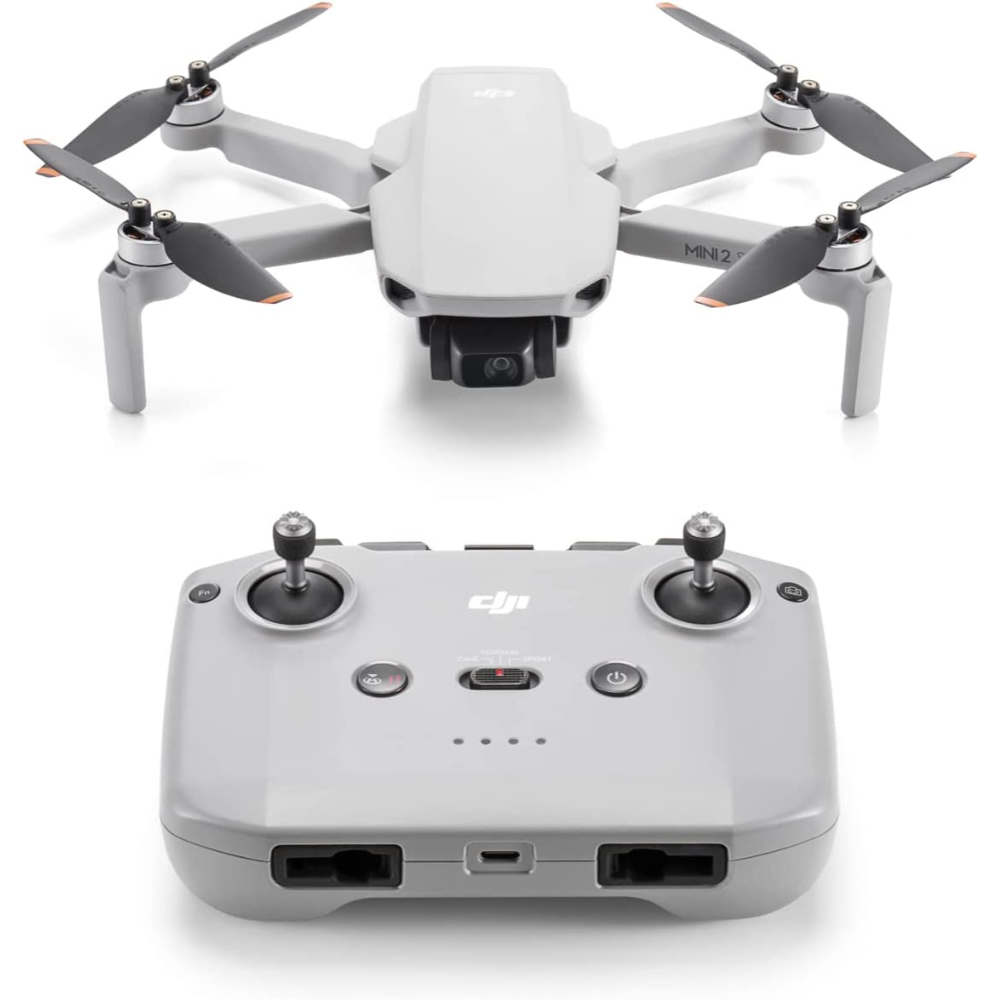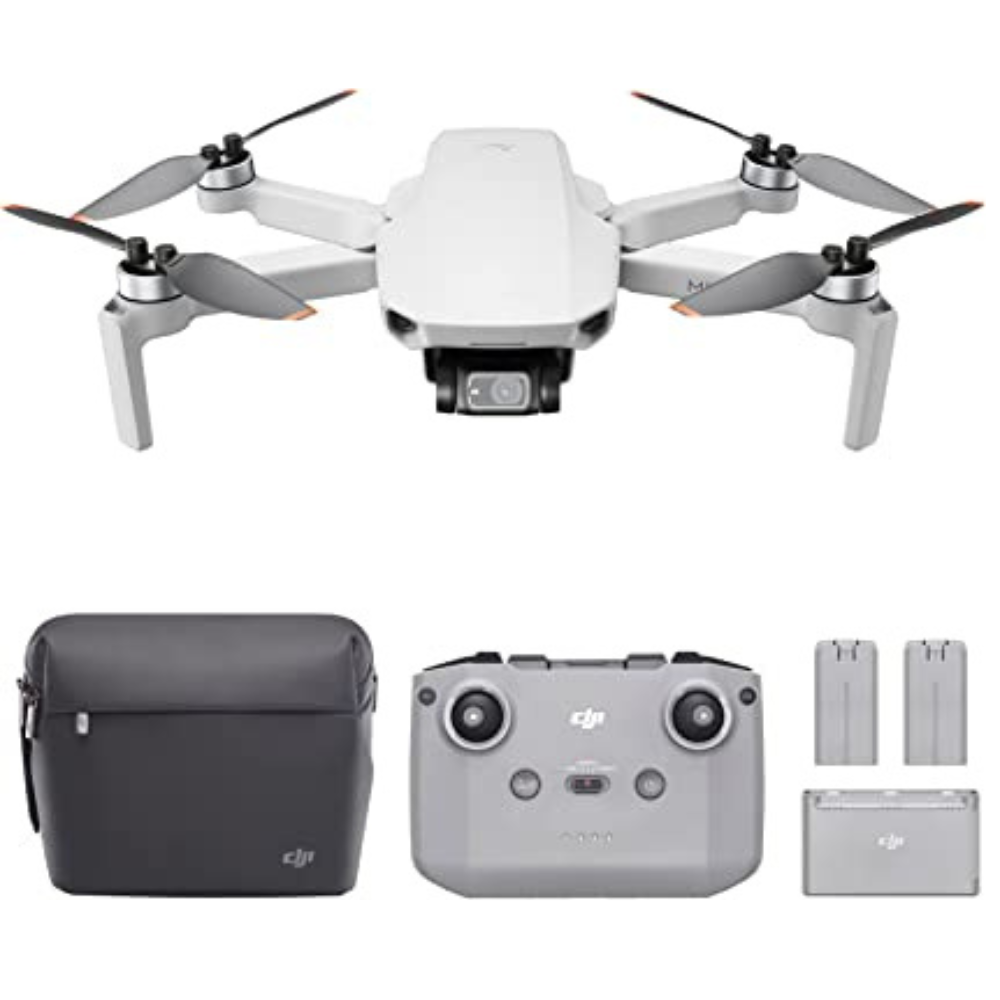5 Best And Recommended Drones For Young Pilots
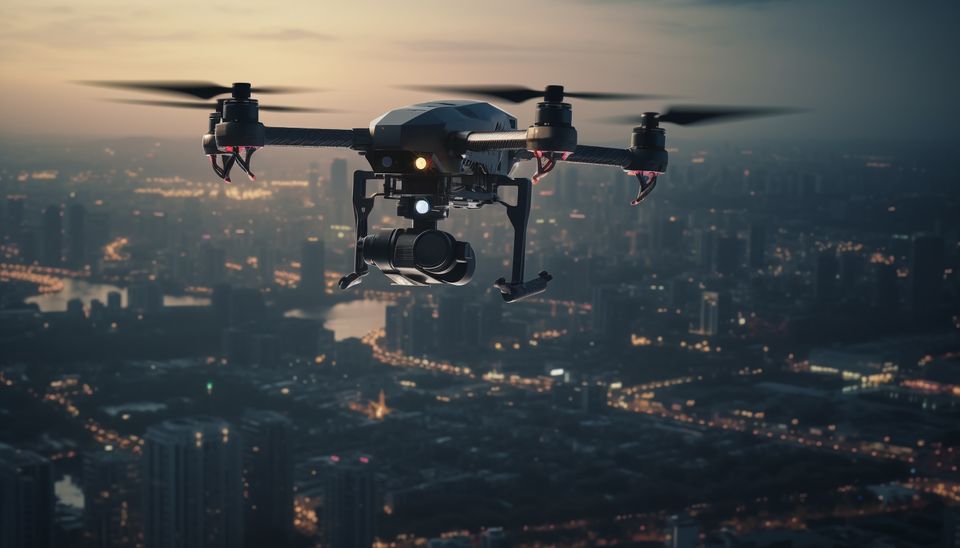
This article contains affiliate links. If you make a purchase through these links, we may earn a commission at no additional cost to you.
Looking to surprise the young pilot in your life with something special?
Got a little aviator in training looking for their first drone? Check out our list of 5 of the best drones for kids that provide just the right challenge for aspiring pilots. Our comprehensive guide covers everything from design to specs plus kids’ safety considerations so you get exactly what you need without sacrificing any of the fun.
Not sure which drone is best or how it works? Don't worry, we've done all the work and research for you already! Find out how these top of-the-line models make flying easy and enjoyable, plus follow our recommended tips on setup and maintenance so your young pilot gets plenty of hours of safe playtime without having to keep troubleshooting service calls or seeking tech support.
Get started now and read up on our recommendations - find some awesome gift ideas for your favorite little pilot today!
How We Choose The Best And Recommended Drones For Young Pilots
Making sure you get the best drone for kid, they can get for their needs requires a lot of research and know-how.
With so many the best drones for kids on the market, it’s hard to know which ones will be most suitable for your young kids pilots. And even if you manage to narrow down your choices, there’s no guarantee you’re picking the right one.
Lucky for you, our team has read through thousands of user reviews and star ratings to select only the Best Drones for Young Pilots. We can help to make sure that you get the perfect and best drones for kids and appropriate for your young pilot's needs!
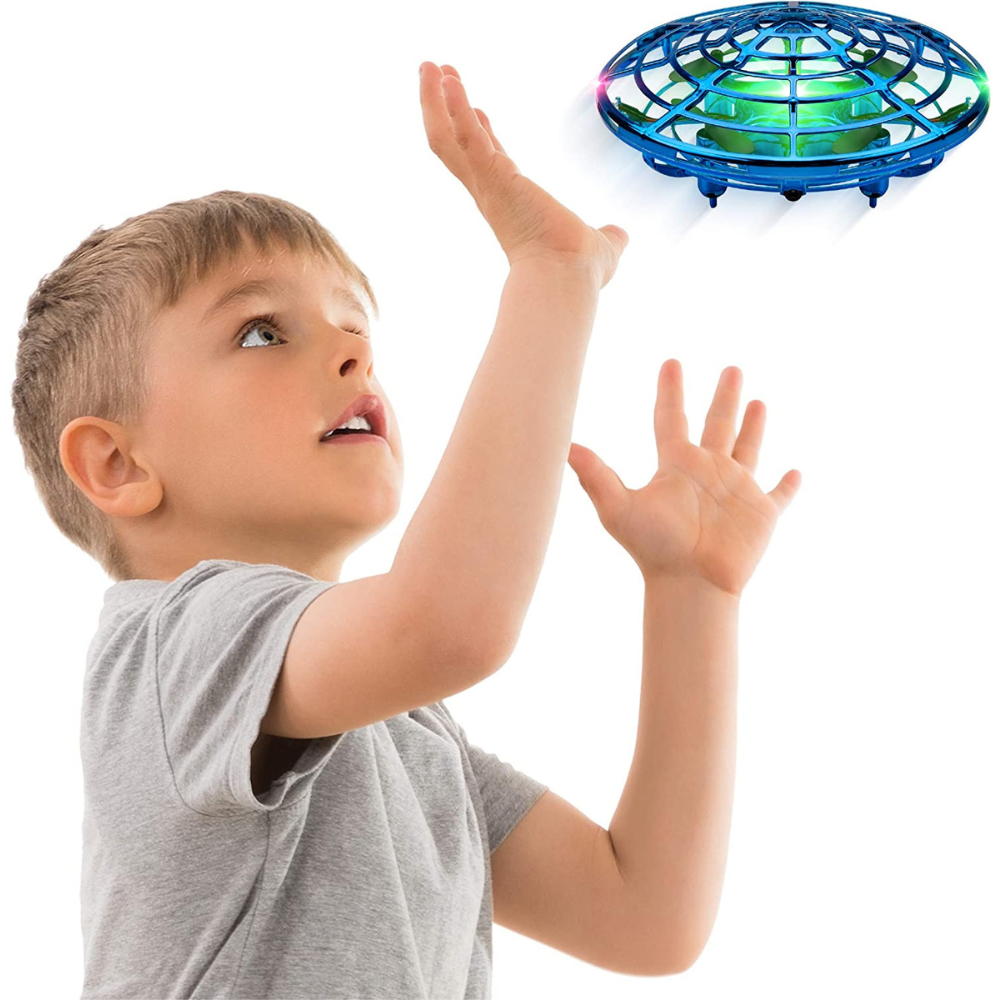
Force1 Scoot Hand Operated Drone for Kids or Adults
Hands Free Motion Sensor Mini Drone #ad #CommissionsEarned
What We Love
Have you ever dreamt of flying a UFO? Now you’ve got your chance with Force1's Scoot hand-operated best drone! Gone are the days of clumsy or clunky remote controllers. Instead, have fun while flicking and tossing the Scoot into the air for an exhilarating experience. Not only is it easy to play catch with thanks to its smart obstacle avoidance sensors, but its safe too - with a webbed shell that protects hands, walls, and furniture.
Enjoy about eight minutes of flight time per 50-minute charge with colorful LEDs lighting up as you soar through the skies. Perfect for children aged 8 and up, this Ufo flying toy is sure to be a hit amongst all kids or adults at heart!
Don’t worry about whether you'll like it - we offer a full refund if you're not thrilled with your purchase. So what are you waiting for? Take off into another universe today with Force1's Scoot hand-operated best drone!
What You Should Know
Meet Force1's Scoot hand-operated best drone - the perfect addition to your collection of flying toy drones! This UFO flying toy is incredibly fun to play with, lighting up with vibrant LEDs and launching into the sky when it's tossed into the air. With smart obstacle avoidance sensors and the ability to guide its flight with your hands, this best drone is like a modern-day catch game that both adults and kids aged 8 and up will enjoy.
And, if there are any worries about damage to walls or furniture, this drone's webbed shell is here to protect them! With a USB recharging cable included, you can enjoy up to 8 minutes of flight time with just a 50-minute charge. We're so confident you'll love the Scoot hand-operated drone that we offer a full refund if it doesn't meet your expectations.
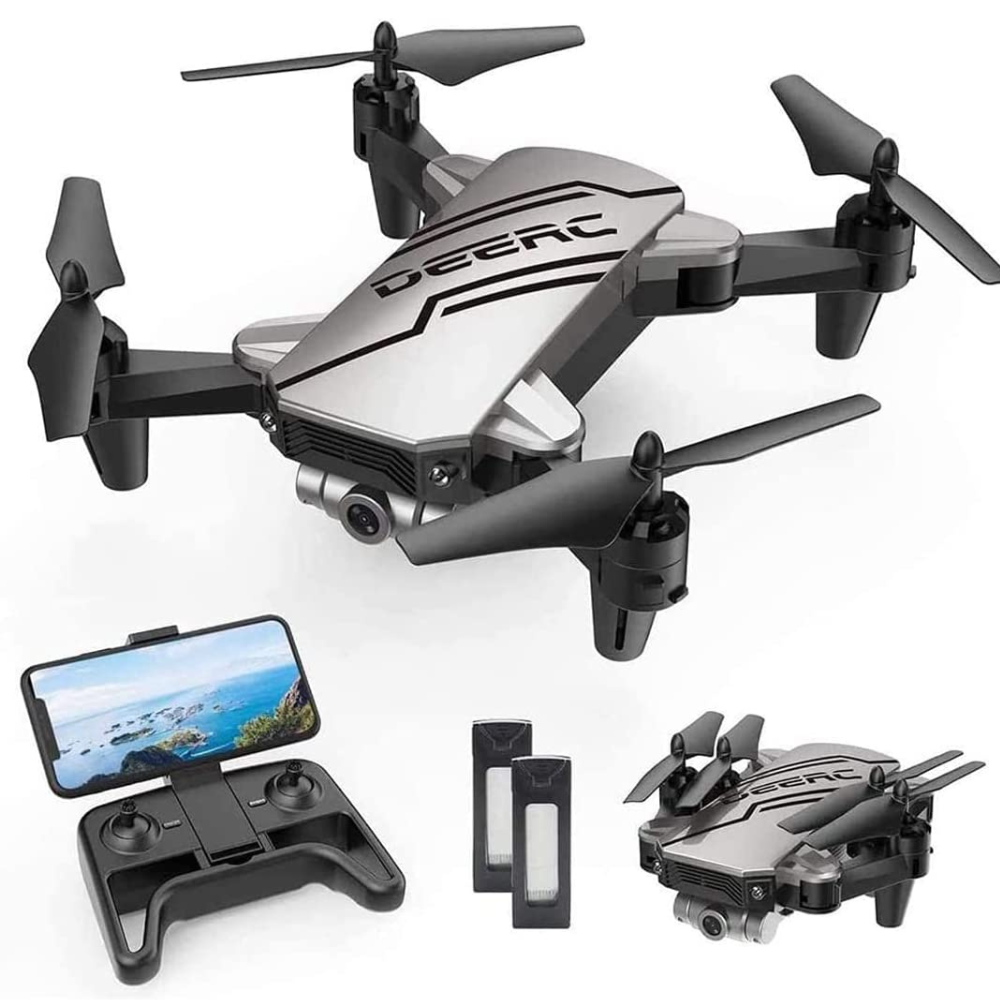
DEERC D20 Mini Drone for Kids
720P HD FPV Camera Remote Control Toys Gifts for Boys Girls with Altitude Hold #ad #CommissionsEarned
What We Love
Experience the DEERC D20 Mini Drone, the perfect companion for capturing stunning aerial photos and videos with ease. With features like One Key Start/Landing and Altitude Hold mode, you can quickly get airborne and stay stable during flight.
The 720P HD Wi-Fi camera provides a live preview on your smartphone, ensuring steady resolution without the need to worry about controlling altitude or orientation. Enjoy exciting functionalities like flip function, gesture control, and voice commands for automatic photos/videos, making your flying experience even more enjoyable.
Plan your flight routes by drawing them on the app, adding a touch of creativity to your shots. Safety is a priority, with features such as low battery alarm, emergency stop, and propeller protection. With two rechargeable batteries, you can extend your flight time for up to 20 minutes per charge. Don't miss out on the opportunity to unleash your creativity – get your DEERC D20 Mini Drone today!
What You Should Know
Get ready to take your drone photography game to new heights with the D20 drone! This drone is loaded with key features that make it easy to capture stunning aerial photos and videos. Thanks to its 720P HD Wi-Fi camera, you can get the perfect shot from up high. And with FPV transmission, you can watch it all live on your smartphone.
What's more, flying the D20 is a breeze thanks to One Key Start/Landing and Altitude Hold, which keep things smooth and steady. Safety is also a top priority - with low power alarm and Emergency stop key features, you can feel confident and in control.
Plus, the four propeller guards provide added protection. And with two rechargeable batteries, you'll have up to 20 minutes of flight time to explore and experiment. So why not take the D20 for a spin and see how high you can go? You might just be surprised by the incredible video footage you capture!
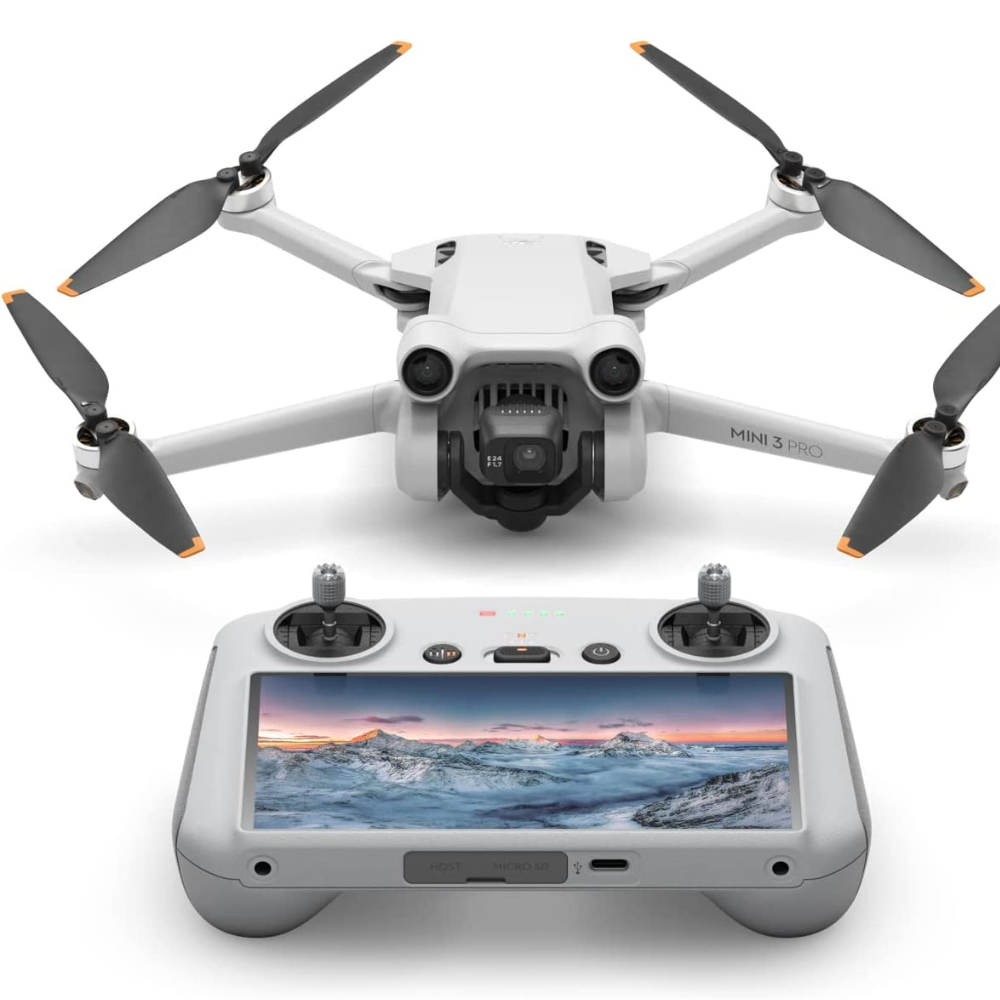
DJI Mini 3 Pro (DJI RC)
Lightweight and Foldable Camera Drone #ad #CommissionsEarned
What We Love
Discover more of the world with the DJI Mini 3 Pro – a lightweight, foldable camera drones that promises stunning 4K/60fps video and 48MP photos! Perfect for capturing your favorite moments in spectacular detail, it comes with an advanced camera system featuring dual native ISO and f/1.7 aperture for day and night shots. Plus, get creative with True Vertical Shooting for portrait photos as well as intelligent functions like FocusTrack, MasterShots, Timelapse, and QuickTransfer.
Fly your DJI Mini 3 Pro with ease – it’s no hassle to take around with its handy foldable design. With no registration required in most countries, feel secure taking off into the skies knowing safety measures like obstacle sensing and APAS 4.0 have you covered. And explore up to 34 minutes at once on one awesome journey!
Capture amazing memories like never before with the DJI Mini 3 Pro – perfect for photographers or adventurers alike! So why not give this trusty companion a try today? Let’s hit the skies together!
What You Should Know
Want to capture stunning aerial footage without the hassle of registration? Look no further than the Mini 3 Pro! This drone boasts a foldable design for easy portability, and its advanced camera system allows you to snap 4K/60fps video and 48MP photos with ease. Whether you're shooting during the day or night, the dual native ISO and f/1.7 aperture will ensure your shots come out flawlessly.
The Mini 3 Pro even supports True Vertical Shooting for portrait photos. Worried about image stability? The gimbal has got you covered. You can fly for up to 34 minutes and explore your surroundings with confidence thanks to intelligent features like obstacle sensing and APAS 4.0. With FocusTrack, MasterShots, Timelapse, and QuickTransfer all at your fingertips, you'll be able to create stunning footage without breaking a sweat. And best of all? The Mini 3 Pro doesn't require registration in most countries, so you can get flying right away!44
What We Love
Capture unforgettable moments with the DJI Mini 2 SE, a lightweight and foldable mini camera drone. Take it with you on your travels, thanks to its low weight of less than 249 grams, and enjoy the convenience of three rechargeable batteries. Whether you're a beginner or experienced flyer, this drone makes operation easy with features like Return to Home and a user-friendly interface.
Expand your horizons with its impressive 10km video transmission range, ensuring a reliable connection even at a distance. With QuickShots and intuitive functions, you can transform ordinary shots into professional-looking aerial footage with just a few taps. Fly longer with a maximum flight time of 31 minutes, and capture stable footage with its 38 kph wind resistance. Elevate your adventures and create lasting memories with the DJI Mini 2 SE.
What You Should Know
Looking to capture some unforgettable moments on your next hike, road trip, or beach day? Look no further than the DJI Mini 2 SE! This powerful little drone weighs in at under 249 grams, making it easy to take wherever your adventures may lead. And with features like Return to Home in case of low battery, it's incredibly simple to operate and learn.
Plus, with a 10km video transmission range, you can explore further and still maintain a reliable connection. And don't worry about missing the perfect shot – the Mini 2 SE offers QuickShots and other intelligent functions that make achieving professional-looking aerial footage a snap. With a maximum flight time of 31 minutes, you'll have plenty of opportunities to capture the perfect shot.
What We Love
Capture life's unforgettable moments like never before with the DJI Mini 2 Fly More Combo! This all-in-one, palm-sized drone is a traveler's dream come true. At under 249g and approximately the same weight as an apple, you can take it anywhere - your next family vacation, friends getaway - this small but powerful drone will follow.
Never worry about being too far away to capture memories any more! With up to 10km of HD video transmission and excellent anti-interference capabilities, you'll be able to fly farther than ever before and see clearer than ever before. Forget having to cut corners for battery life as well thanks to the extended 31 minutes assuming maximum flight time.
Don't sacrificed stability and quality either; with level 5 wind resistance and maximum altitude of 4,000m you can rest assured your footage will always be crystal clear. Get ready to create stunning aerial videos that take your content creation or social media presence to new heights with the DJI Mini 2 Fly More Combo!
What You Should Know
Have you ever wanted to capture stunning aerial footage but couldn't quite get the perfect shot? Look no further than the DJI Mini 2. Boasting up to 10km of HD video transmission and strong anti-interference capabilities, this drone lets you fly farther and see clearer. Not to mention, its impressive battery life of 31 minutes gives you plenty of time to get that picture-perfect shot.
Plus, say goodbye to worrying about wind interference - the Mini 2 can resist up to level 5 winds and take off to a max altitude of 4,000 meters. And with 4x digital zoom, it's easier than ever to capture those shots from varying distances. With just a few taps, the DJI Mini 2 can record and shoot like a pro - making it perfect for novice and experienced aerial photographers alike.
Buyer's Guide for Purchasing the Top Drones for Young Pilots
Shopping for the best drones for kids can be overwhelming. There are so many different types of drones available on the market and it's hard to know which ones are best for your needs.
You don't want to make an expensive mistake when making this important purchase decision. You want to get a drone that meets your child's needs and will help them learn how to fly safely.
Look no further! Our team has created an informative buyers guide to help you make the right choice with confidence. This comprehensive guide will help you understand what features and elements to look for, so you can find the perfect drone for your young pilot in no time!
How does drones work for kids?
Kids Drones works by providing them with an exciting and interactive way to explore and learn. Here's how drones typically work for kids:
- Flight Controls: Drone is operated using remote control or smartphone apps. Kids can learn how to maneuver the drone in different directions, control its altitude, and adjust its speed modes. They gain hands-on experience in piloting and mastering the flight controls.
- Safety Key Features: Many kids drones designed and come with built-in safety key features such as propeller guards, altitude limits, and emergency stop buttons. These features help protect both the drone and the child during flights, ensuring a safe and enjoyable experience.
- Aerial Photography and Video: Drones equipped with cameras allow kids to capture aerial photos and videos. They can learn about framing shots, exploring different perspectives, and capturing unique moments from above. This introduces them to basic photography and videography skills.
- STEM Learning: Drones offer an excellent opportunity for kids to engage in STEM learning. They can learn about the principles of flight, aerodynamics, electronics, and even programming. Some drones have coding capabilities that allow kids to create programs and automate drone movements.
- Outdoor Exploration: Aerial drones encourages kids to spend more time outdoors. They can explore new environments, appreciate nature from a different viewpoint, and engage in imaginative play. It promotes physical activity and a sense of adventure.
- Problem-Solving Skills: Operating drones involves overcoming challenges and solving problems. Kids may need to troubleshoot technical issues, navigate obstacles, and adjust flight settings. This enhances their problem-solving abilities and critical thinking skills.
- Teamwork and Collaboration: Drones can be flown with friends or in teams. Kids can coordinate flight patterns, create formations, and engage in friendly competitions or cooperative activities. This promotes teamwork, communication, and collaboration.
- Creativity and Imagination: Drones spark creativity and imagination in kids. They can experiment with different flight patterns, perform aerial tricks, and even create storytelling scenarios using the drone's capabilities. It encourages artistic expression and imaginative play.
- Safety and Responsibility: Aerial drones teaches kids about responsible and safe practices. They learn about airspace regulations, privacy concerns, and the importance of respecting rules and guidelines. It promotes a sense of responsibility and awareness.
- Future Opportunities: Introducing kids to drones at a young age can open doors to future opportunities in drone-related industries. They may develop skills in aerial photography, videography, or even drone engineering, paving the way for potential career paths.
Overall, most drones provide an engaging and educational platform for kids to learn, explore, and develop a range of valuable skills. It combines technology, creativity, and outdoor exploration, making it a popular choice for young enthusiasts.
What are drones for kids facts?
Here are some interesting facts about drones for kid/s:
- Educational Tool: Drones can serve as an educational tool, teaching kids about science, technology, engineering, and mathematics (STEM) concepts such as aerodynamics, robotics, programming, and more.
- Age-Appropriate Models: There are drones specifically designed for different age ranges, ensuring that kids can find drones suitable for their skill level and capabilities.
- Safety Key Features: Many drones for kids come with safety features such as propeller guards, altitude limits, and emergency stop buttons to minimize accidents and injuries during flights.
- Skill Development: Aerial drones helps kids develop important skills such as hand-eye coordination, spatial awareness, problem-solving, critical thinking, and decision-making.
- Creativity and Expression: Kids can express their creativity by customizing their drones with decals, colors, and designs. They can also capture aerial photos and videos, allowing them to explore their artistic side.
- Outdoor Exploration: Drones encourage kids to spend time outdoors, exploring new environments, and discovering the world from a different perspective.
- Social Interaction: Drone flying can be a social activity, as kids can fly drones together, participate in drone racing events, or engage in cooperative activities that promote teamwork and communication.
- Technological Literacy: Operating drones introduces kids to modern technologies such as remote control, sensors, GPS systems, and even programming interfaces, promoting technological literacy from an early age.
- Career Opportunities: By learning about drones and developing skills in drone operation, photography, videography, or coding, kids can explore future career paths in industries such as aerial photography, cinematography, surveying, and more.
- Rules and Regulations: Flying drones helps kids understand the importance of following rules and regulations, respecting privacy, and practicing responsible and safe flying habits.
These facts highlight the educational, recreational, and skill-building aspects of drones for kids, making them a popular and enriching activity for young enthusiasts.
What are the basic things to know about drone?
Here are some basic things to know about drones:
- Definition: A drone, also known as an unmanned aerial vehicle (UAV), is an aircraft without a human pilot aboard. It is typically controlled using remote control or autonomously through onboard computers.
- Types of Drones: Drones come in various sizes and types, ranging from small toy drones to professional-grade models used for photography, videography, surveying, and more. Common types include quadcopters (four-rotor drones), hexacopters (six-rotor drones), and octocopters (eight-rotor drones).
- Flight Controls: Drones are controlled using a remote control or a smartphone/tablet app. The pilot uses joysticks or touchscreen controls to maneuver the drone, adjust its altitude, and control its movements.
- Flight Time: Drones have limited flight times due to their battery capacity. Entry-level drones usually offer flight times of around 10-20 minutes, while more advanced models can provide longer flight times of 20-30 minutes or more. It's important to manage flight time to ensure the safe return of the drone before the battery is depleted.
- Safety Features: Many drones come equipped with safety features to protect against accidents and damage. These features may include propeller guards to prevent injuries, altitude limits to prevent flying too high, and return-to-home functions that automatically bring the drone back to its takeoff point.
- Cameras and Gimbal Systems: Some drones are equipped with built-in cameras or have the ability to mount cameras. These cameras can capture photos and videos from aerial perspectives. Advanced drones may have gimbal systems, which provide stability and smooth footage by counteracting drone movements.
- GPS and Flight Modes: Higher-end drones often have GPS capabilities, allowing for precise positioning and navigation. They may offer flight modes such as follow me mode, waypoint navigation, and orbit mode, which enhance the functionality and versatility of the drone.
- Legal and Regulatory Considerations: Operating a drone is subject to legal and regulatory considerations. It's important to be aware of local laws, restrictions, and guidelines regarding drone usage, including registration requirements, no-fly zones, and privacy regulations.
- Maintenance and Upkeep: Drones require regular maintenance to ensure optimal performance and longevity. This includes checking and replacing propellers, calibrating sensors, updating firmware, and inspecting drone batteries and connections.
- Responsible Flying: Responsible flying practices involve respecting the privacy of others, flying within visual line of sight, avoiding restricted airspace, and flying in a safe and controlled manner. It's important to follow guidelines and be considerate of others when operating a drone.
These basic points provide a foundation of knowledge for understanding drones and their operation. As you gain more experience and explore the world of drones, you can delve into more advanced concepts and features.
What are 3 things drones can be used for?
Drones can be used for various purposes, but here are three common applications:
- Aerial Photography and Videography: Drones equipped with cameras are widely used for capturing stunning aerial photos and videos. They offer unique perspectives and angles that were previously only possible with expensive equipment or manned aircraft. Drones are used in industries such as filmmaking, real estate, tourism, and journalism to capture breathtaking aerial footage.
- Surveillance and Inspections: Drones are employed for surveillance and inspections in areas that are difficult to access or potentially dangerous for humans. They can be equipped with thermal cameras, high-resolution cameras, or specialized sensors to monitor infrastructure, conduct search and rescue operations, inspect power lines or pipelines, and assess disaster-affected areas. Drones provide a cost-effective and efficient solution for gathering visual data and performing inspections.
- Recreational and Racing Activities: Drones have gained popularity among hobbyists and enthusiasts for recreational purposes. They are used for racing, aerial acrobatics, and drone photography competitions. Racing drones are designed for speed and agility, with pilots navigating through obstacle courses at high speed modes. Drones also offer an exciting and engaging outdoor activity for individuals and families to enjoy.
These are just a few examples of the diverse applications of drones. Drones are also used in agriculture, environmental monitoring, delivery services, mapping, scientific research, and more, showcasing their versatility and potential across various industries.
How can drones help humans?
Drones have the potential to help humans in numerous ways. Here are some key ways in which drones can be beneficial:
- Search and Rescue Operations: Drones equipped with thermal imaging cameras and sensors can aid in search and rescue missions. They can quickly cover large areas, locate missing persons or survivors in remote or disaster-stricken areas, and provide real-time information to rescue teams, helping them make informed decisions and save lives.
- Delivery Services: Drones have the capacity to revolutionize the delivery industry by providing fast and efficient transportation of goods. They can deliver medical supplies to remote or inaccessible areas, transport emergency aid during disasters, or deliver packages to homes or businesses, reducing delivery times and costs.
- Infrastructure Inspections: Drones equipped with high-resolution cameras and sensors can inspect infrastructure such as bridges, power lines, pipelines, and buildings. They can identify structural defects, detect leaks, and assess the condition of hard-to-reach areas, allowing for timely maintenance and reducing the need for manual inspections that can be time-consuming and risky.
- Environmental Monitoring: Drones play a vital role in environmental monitoring and conservation efforts. They can be used to survey wildlife populations, monitor changes in ecosystems, detect illegal activities such as poaching or deforestation, and collect data for research and conservation purposes. Drones enable scientists and conservationists to gather information more efficiently and in areas that are challenging to access.
- Disaster Assessment and Response: Drones provide valuable assistance during natural disasters and emergency situations. They can assess damage after earthquakes, hurricanes, or floods, helping authorities prioritize response efforts. Drones equipped with sensors can detect gas leaks or chemical spills, providing crucial information for emergency response teams to take appropriate action.
- Agriculture and Crop Monitoring: Drones equipped with cameras and multispectral sensors can monitor crop health, detect pests or diseases, and optimize irrigation and fertilization practices. This data-driven approach enables farmers to make informed decisions, increase crop yields, and reduce resource wastage, ultimately improving agricultural productivity and sustainability.
- Filmmaking and Photography: Drones have transformed the filmmaking and photography industry by providing stunning aerial shots and cinematic footage. They offer a cost-effective alternative to traditional methods that require helicopters or cranes, allowing filmmakers and photographers to capture breathtaking perspectives and enhance their creative work.
These are just a few examples of how drones can assist humans in various fields. Their versatility, mobility, and ability to access challenging environments make them valuable tools that can improve efficiency, safety, and outcomes across different industries and sectors.
What is the main purpose of a drone?
The main purpose of a drone, also known as an unmanned aerial vehicle (UAV), is to perform tasks or carry out operations without a human pilot onboard. Drones are designed for remote control or to be remotely controlled or operate autonomously through pre-programmed instructions. The specific purposes of drones can vary widely depending on their design, features, and the industry or application they are intended for. Here are some common main purposes of drones:
- Aerial Photography and Videography: Drones equipped with cameras are widely used for capturing aerial photos and videos. They provide unique perspectives and angles that were previously only possible with expensive equipment or manned aircraft. Drones are employed in industries such as filmmaking, real estate, tourism, and journalism to capture stunning aerial footage.
- Surveillance and Inspections: Drones are used for surveillance and inspections in various sectors. They can be equipped with cameras, thermal sensors, or other specialized equipment to monitor infrastructure, conduct security surveillance, inspect power lines or pipelines, and assess hard-to-reach areas. Drones provide a cost-effective and efficient solution for gathering visual data and performing inspections in locations that are challenging for humans to access.
- Search and Rescue Operations: Drones play a crucial role in search and rescue missions. Equipped with cameras, thermal imaging sensors, or other detection systems, drones can quickly search large areas, locate missing persons or survivors, and provide real-time information to rescue teams. Drones help save time, resources, and potentially lives during critical situations.
- Delivery and Logistics: Drones have the potential to revolutionize the delivery and logistics industry. They can transport goods, supplies, or medical aid to remote or inaccessible areas quickly and efficiently. Drone delivery services offer the advantage of faster delivery times, reduced costs, and improved accessibility in various scenarios, such as emergency situations or delivering packages to remote locations.
- Military and Defense: Drones have significant applications in military and defense operations. They are used for reconnaissance, surveillance, intelligence gathering, target acquisition, and even in combat situations. Military drones are designed to operate in hostile environments and carry out missions that may pose risks to human personnel.
These are just a few examples of the main purposes of drones. Drones are versatile tools that find applications in numerous industries, including agriculture, environmental monitoring, mapping, scientific research, filmmaking, and more. Their capabilities continue to expand as technology advances and new use cases emerge.
Why is drone technology important?
Drone technology is important for several reasons:
- Efficiency and Productivity: Drones can perform tasks faster and more efficiently than traditional methods, leading to increased productivity. For example, in industries such as agriculture, drones equipped with advanced sensors and imaging capabilities can survey large fields, monitor crop health, and identify areas that require attention. This enables farmers to make timely interventions and optimize their operations, resulting in higher crop yields and reduced resource wastage.
- Cost-Effectiveness: Drones offer cost-effective solutions for various applications. They can replace expensive manned aircraft or labor-intensive manual work in tasks such as aerial surveys, infrastructure inspections, or delivery services. Drones reduce the need for human resources and can cover large areas in less time, resulting in significant cost savings for businesses.
- Safety and Risk Reduction: Drones can be deployed in hazardous or hard-to-reach environments, mitigating risks to human lives. For example, in search and rescue operations, drones can quickly survey vast areas, locate missing persons, or assess disaster-stricken areas without endangering rescue teams. In industries like construction or infrastructure inspections, drones can inspect tall structures, bridges, or power lines, minimizing the need for workers to perform dangerous tasks at heights.
- Data Collection and Analysis: Drones equipped with sensors and cameras can collect high-resolution data from the air, providing valuable insights for various industries. The data collected can be used for mapping, surveying, environmental monitoring, and other applications. Advanced imaging sensors, such as thermal or multispectral cameras, enable detailed analysis and help in decision-making processes.
- Innovation and Advancements: Drone technology continues to evolve and drive innovations in numerous sectors. Ongoing research and development efforts are improving drone capabilities, including flight stability, longer battery life, autonomous features, and enhanced payload capacity. These advancements open up new possibilities and applications in fields such as delivery services, aerial photography, infrastructure inspections, and environmental conservation.
- Environmental Impact: Drones can contribute to environmental sustainability efforts. In agriculture, they enable precise application of fertilizers and pesticides, reducing chemical usage and minimizing environmental impact. Additionally, drones can monitor and assess environmental changes, wildlife populations, and ecosystems, aiding in conservation and environmental research.
- Education and Skill Development: The emergence of drone technology provides opportunities for education and skill development. Learning to operate drones and understanding the principles behind their flight can foster interest in science, technology, engineering, and mathematics (STEM) fields among students. Drone technology offers a platform for learning practical skills, such as piloting, data analysis, and programming, which can be beneficial for future careers.
Overall, drone technology is important because it offers improved efficiency, cost savings, enhanced safety, data-driven insights, innovation, and environmental benefits. The versatility and expanding applications of drones make them valuable tools in various industries, contributing to economic growth, sustainability, and technological advancements.
Why is drone technology important to us?
Drone technology is important to us for several reasons:
- Aerial Perspective and Exploration: Drones provide a unique aerial perspective that was previously inaccessible to most individuals. They allow us to explore and capture stunning aerial views of landscapes, landmarks, and events. This enhances our visual experiences and enables us to see the world from new angles.
- Photography and Videography: Drones equipped with high camera quality enable us to capture professional-grade aerial photographs and videos. This opens up creative possibilities for photographers, filmmakers, and content creators, allowing them to produce captivating visuals and tell stories from a bird's eye view.
- Recreational and Entertainment Purposes: Drones have become popular recreational devices that provide hours of fun and entertainment. Flying drones can be a thrilling hobby, allowing people of all ages to enjoy outdoor activities and experience the joy of piloting a remote-controlled aircraft.
- Filming and Documentation: Drones are increasingly used in film production, documentaries, and journalism to capture dynamic and engaging footage. They offer a cost-effective alternative to traditional camera setups, allowing filmmakers and journalists to obtain aerial shots without the need for helicopters or cranes.
- Search and Rescue Operations: Drones play a crucial role in search and rescue missions. Equipped with cameras, thermal sensors, or other detection systems, they can quickly cover large areas and provide real-time information to rescue teams. Drones assist in locating missing persons, identifying hazards, and improving the effectiveness of search and rescue operations, potentially saving lives.
- Environmental Monitoring and Conservation: Drones have proven to be valuable tools for environmental monitoring and conservation efforts. They can be used to survey and assess ecosystems, track wildlife populations, monitor deforestation, and detect environmental changes. Drones enable researchers and conservationists to gather data more efficiently and make informed decisions to protect and preserve our natural resources.
- Infrastructure Inspections and Maintenance: Drones are increasingly used for inspecting infrastructure such as bridges, power lines, and pipelines. Their ability to access hard-to-reach areas and capture high-resolution images or videos helps identify potential issues, assess structural integrity, and plan maintenance or repairs. This enhances the safety and efficiency of infrastructure management.
- Delivery Services: Drone technology is revolutionizing the logistics industry by enabling faster and more efficient delivery services. Drones can transport small packages or medical supplies to remote or inaccessible locations, reducing delivery times and costs, especially in emergency situations or areas with limited infrastructure.
In summary, drone technology is important to us as it provides unique perspectives, enhances creativity, supports various industries, aids in search and rescue operations, contributes to environmental monitoring, and offers convenience in logistics and delivery services. Drones have become valuable tools that enhance our lives, entertain us, and assist in numerous practical applications.
Why is drone technology needed?
Drone technology is essential due to its ability to simplify, expedite, and enhance various tasks. Drones, unmanned aerial vehicles (UAVs), are controlled remotely or autonomously, offering advantages across industries. They provide precise operations over large areas, surpassing the speed of traditional methods. Their small size enables inspections in challenging locations, ensuring safety for personnel. The applications of drone technology are vast, including agriculture monitoring, search and rescue operations, surveying and mapping, real estate photography, package delivery, law enforcement surveillance, infrastructure inspections, scientific research, and defense reconnaissance. Drones offer cost-effective solutions, autonomy, and increased efficiency, revolutionizing tasks that were once impossible or time-consuming.
How do drones impact our lives?
Drones have revolutionized transportation, photography, and surveillance. They provide access to remote areas and enhance safety and security. With their versatility and low noise levels, drones are used for various purposes, from delivering packages to conducting military operations and aiding in disaster relief. They offer cost-effective solutions for agriculture, wildlife monitoring, and scientific research. The integration of drone technology into everyday life has limitless potential and is transforming how we live and work.
Looking for the Best Drones for Kids Pilot?
The right drone for a young pilot can be an incredibly fulfilling and beneficial step in their passion for technology - which is why we've taken the time to analyze and provide the recommended and best drones for kids available. With backing from both trusted customer reviews across Amazon, plus careful consideration of our own rankings method - you should feel assured that any of these awesome picks make great choices for your young technological pilot.
Whether you are buying Christmas presents, birthday gifts, or simply treating their inner aviator to an amazing piece of equipment - these drones will provide your young passengers with stunt-ready features, plus durable designs to survive the inevitable midair bumps. And for those who think they need something more powerful to fly around the local park - remember there are always the higher tier models with even better customizability!
So if you're looking for a drone that combines balance between performance and price, then look no further – check out one of these trusty selections today! Tap the button to check the price and get ready to experience an awesome aerial journey that young pilots everywhere won't forget!
Note: As an Amazon Associate I earn from qualifying purchases.
This article could include affiliate links, implying that I might earn a minor commission from product sales made through these links. Rest assured, all viewpoints are sincere and continue to reflect my personal stance.

